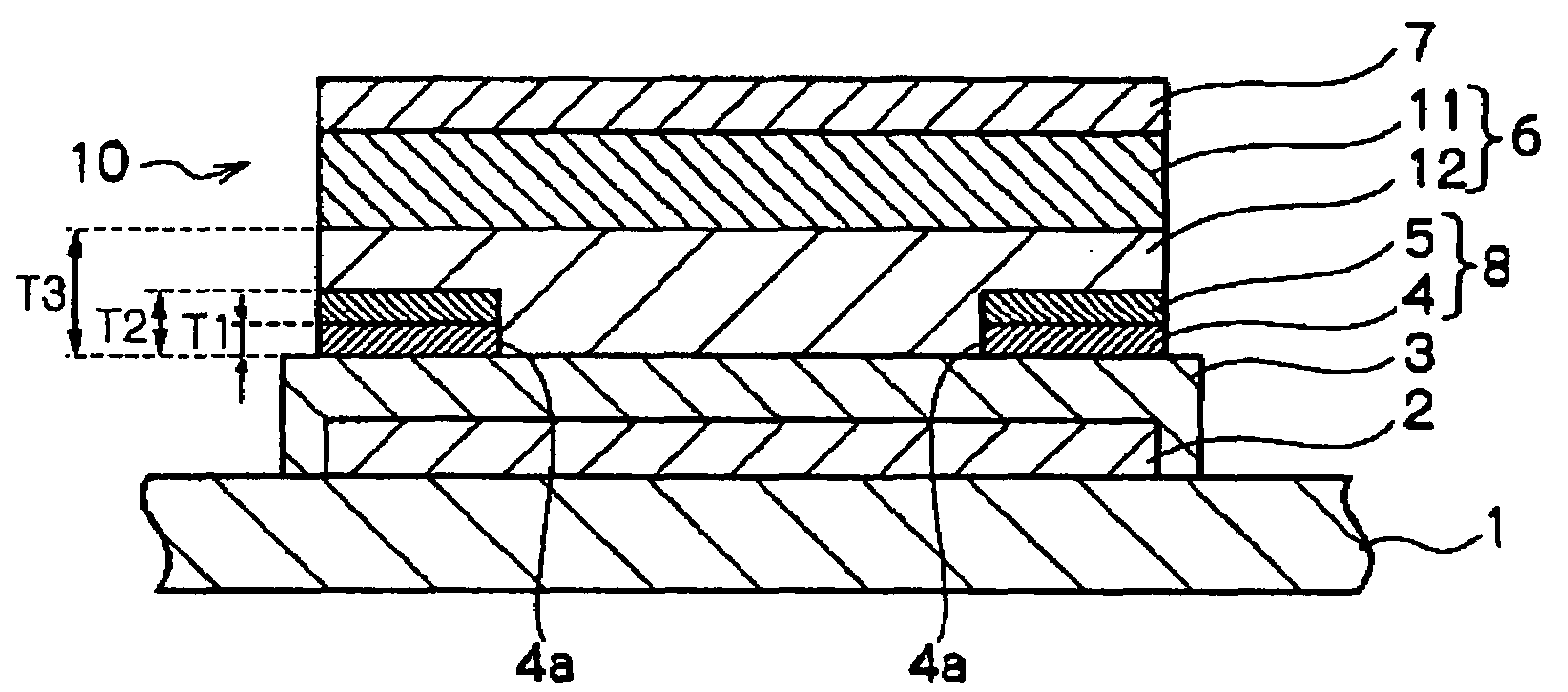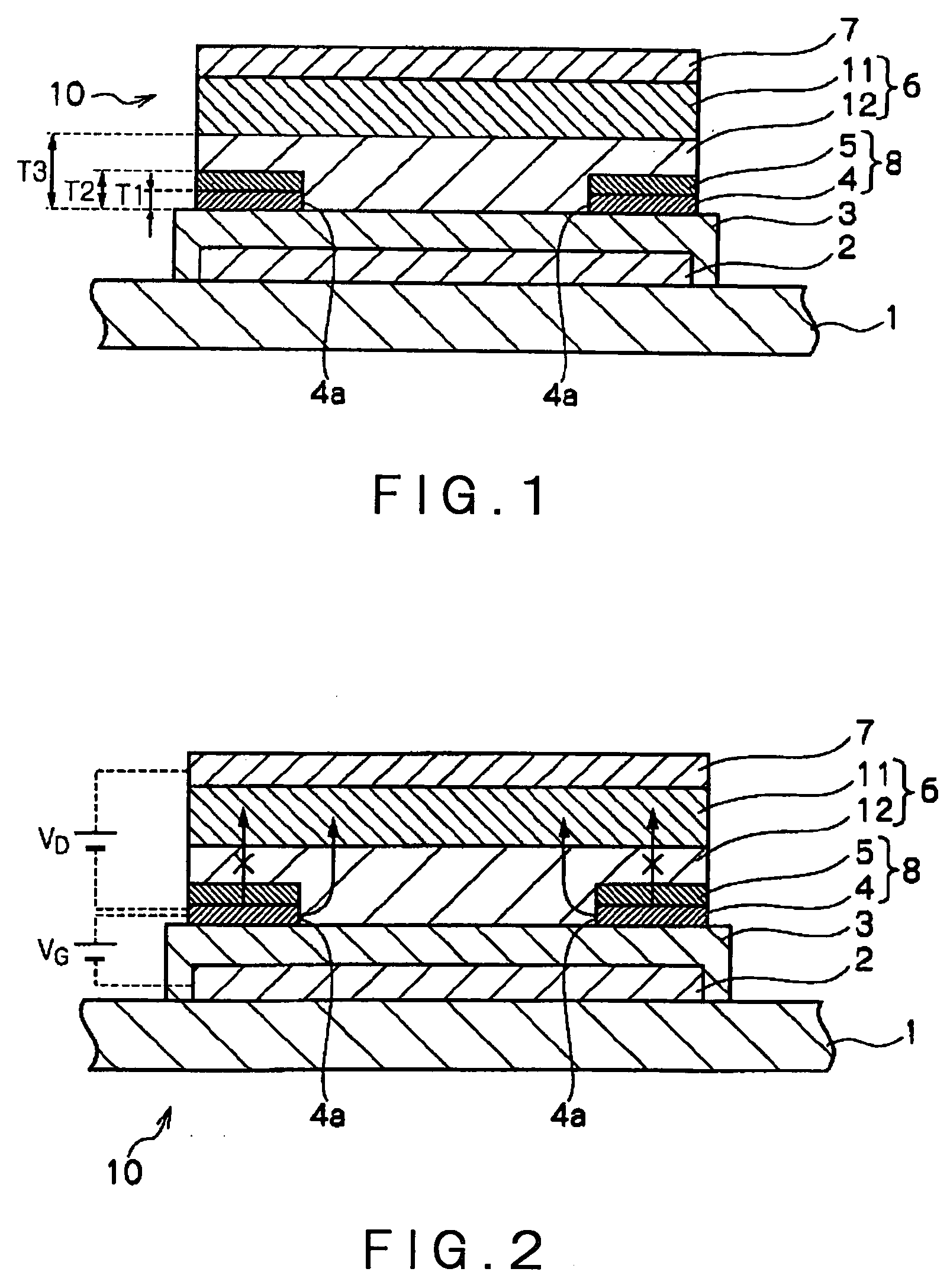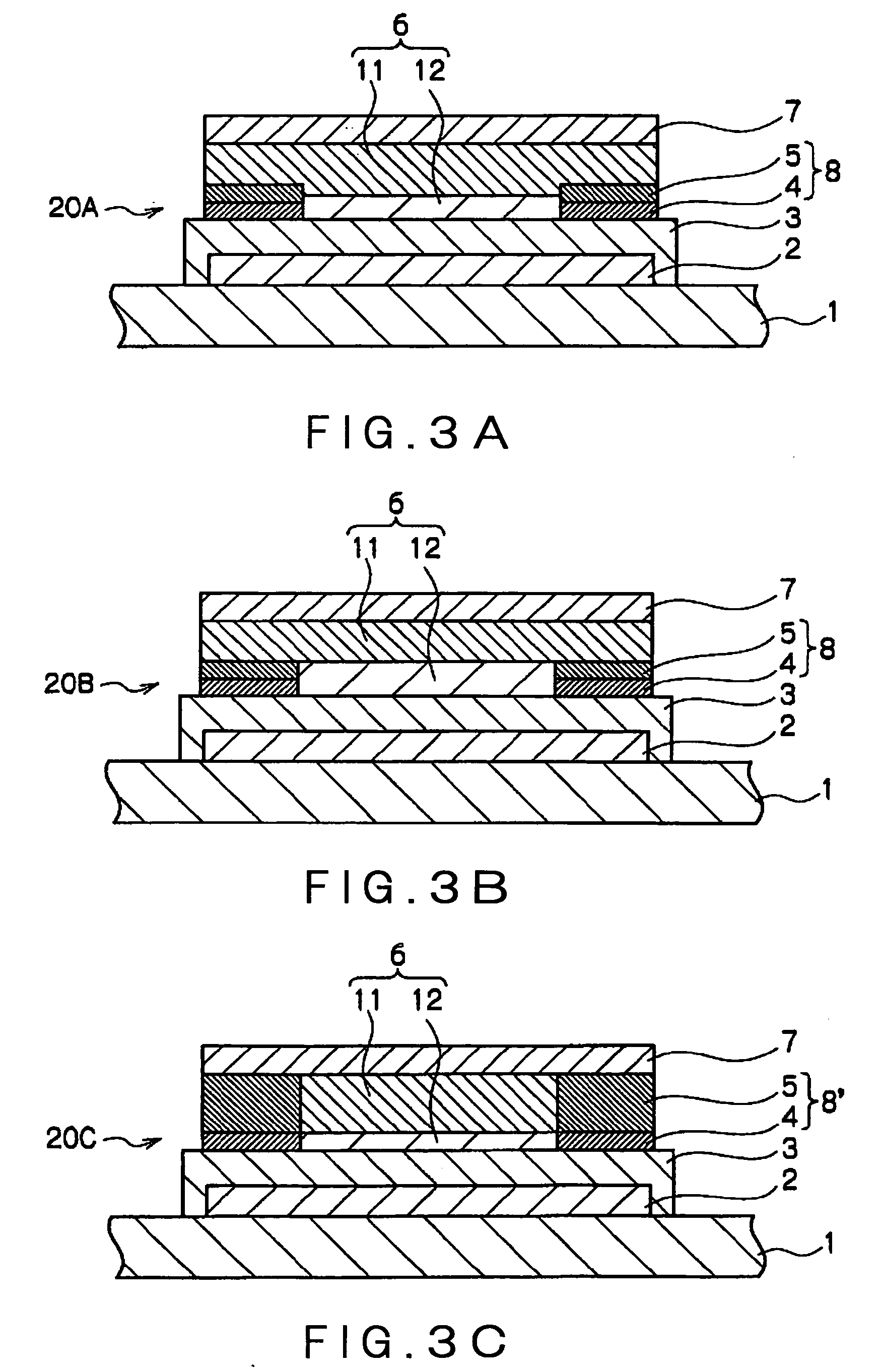Organic Luminescence Transistor Device and Manufacturing Method Thereof
- Summary
- Abstract
- Description
- Claims
- Application Information
AI Technical Summary
Benefits of technology
Problems solved by technology
Method used
Image
Examples
example 1
[0132]An insulation film 3 was formed of a PVP-based resist (manufactured by TOKYO OHKA KOGYO CO. Ltd., trade name: TMR-P10), into a 300 nm thickness, by means of a spin coating method, on a glass substrate 1 having an assistance electrode 2 that is made of an ITO film and has a 100 nm thickness.
[0133]Next, by means of a vacuum deposition method using a mask, a first electrode 4 (anode) was formed of Au (whose thickness was 30 nm). Then, in order to cover the first electrode 4, the positive-type resist (manufactured by TOKYO OHKA KOGYO CO. Ltd., trade name: TMR-P10) was applied on the insulation film 3 by means of a spin coating method. Then, an exposing light including wavelengths of 405 nm and 436 nm is irradiated from a side of the substrate 1, so as to expose the positive-type resist film between the first electrodes 4 (anodes) to the light. Then, the positive-type resist film was developed with an alkali development liquid (trade made: NMD-3). Thus, the resist film (whose thick...
example 2
[0137]An insulation film 3 was formed of a PVP-based resist (manufactured by TOKYO OHKA KOGYO CO. Ltd., trade name: TMR-P10), into a 300 nm thickness, by means of a spin coating method, on a glass substrate 1 having an assistance electrode 2 that is made of an ITO film and has a 100 nm thickness.
[0138]Next, by means of a vacuum deposition method using a mask, pentacene (50 nm in thickness) as the electron-charge (positive hole) injection layer 12′ / Au (30 nm in thickness) as the first electrode 4 (anode) / SiO2 (100 nm in thickness) as the electron-charge (positive hole) injection inhibiting layer 5 / pentacene (50 nm in thickness) as the electron-charge (positive hole) injection layer 12 between the laminated structures 8 each of which consists of the first electrode 4 and the electron-charge injection inhibiting layer 5 / α-NPD (90 nm in thickness) as the electric-charge (positive hole) transfer layer 13 / Alq3 (60 nm in thickness) as a luminescent layer 11 / Lif (1 nm in thickness) as an el...
example 3
[0141]An insulation film 3 was formed of a PVP-based resist (manufactured by TOKYO OHKA KOGYO CO. Ltd., trade name: TMR-P10), into a 300 nm thickness, by means of a spin coating method, on a glass substrate 1 having an assistance electrode 2 that is made of an ITO film and has a 100 nm thickness.
[0142]Next, by means of a vacuum deposition method using a mask, a first electrode 4 (anode) was formed of Au (whose thickness was 30 nm). Then, in order to cover the first electrode 4, the positive-type resist (manufactured by TOKYO OHKA KOGYO CO. Ltd., trade name: TMR-P10) was applied on the insulation film 3 by means of a spin coating method. Then, an exposing light including wavelengths of 405 nm and 436 nm is irradiated from a side of the substrate 1, so as to expose the positive-type resist film between the first electrodes 4 (anodes) to the light. Then, the positive-type resist film was developed with an alkali development liquid (trade made: NMD-3). Thus, the resist film (whose thick...
PUM
 Login to View More
Login to View More Abstract
Description
Claims
Application Information
 Login to View More
Login to View More - R&D
- Intellectual Property
- Life Sciences
- Materials
- Tech Scout
- Unparalleled Data Quality
- Higher Quality Content
- 60% Fewer Hallucinations
Browse by: Latest US Patents, China's latest patents, Technical Efficacy Thesaurus, Application Domain, Technology Topic, Popular Technical Reports.
© 2025 PatSnap. All rights reserved.Legal|Privacy policy|Modern Slavery Act Transparency Statement|Sitemap|About US| Contact US: help@patsnap.com



